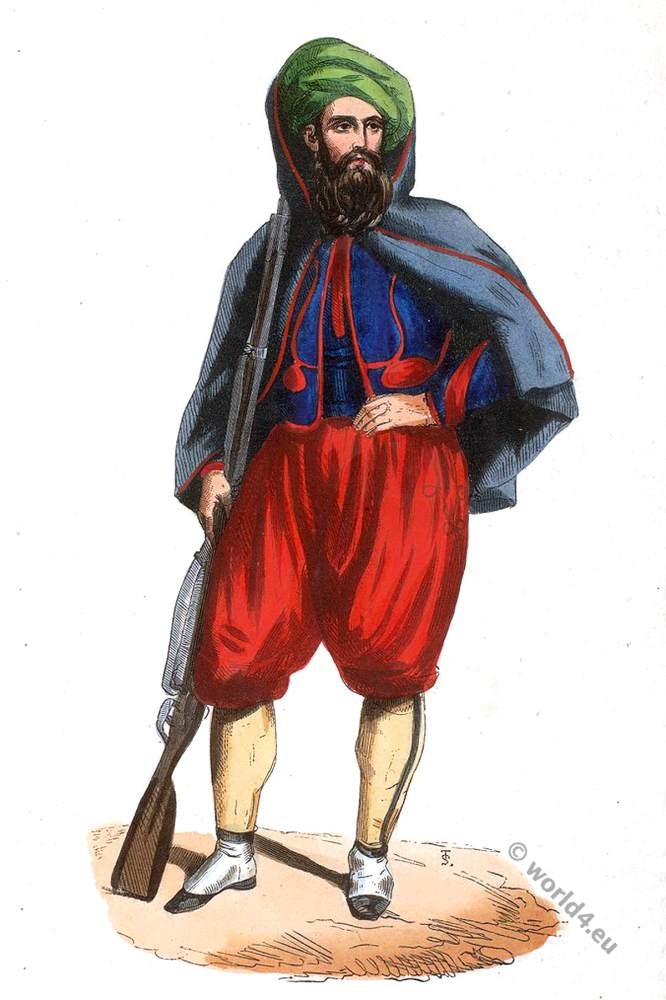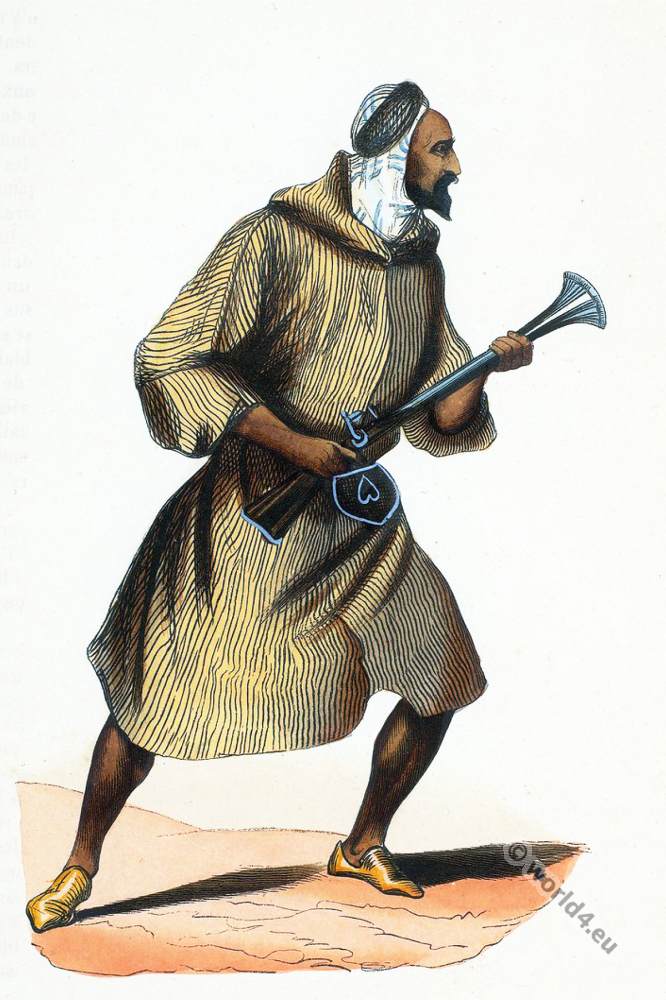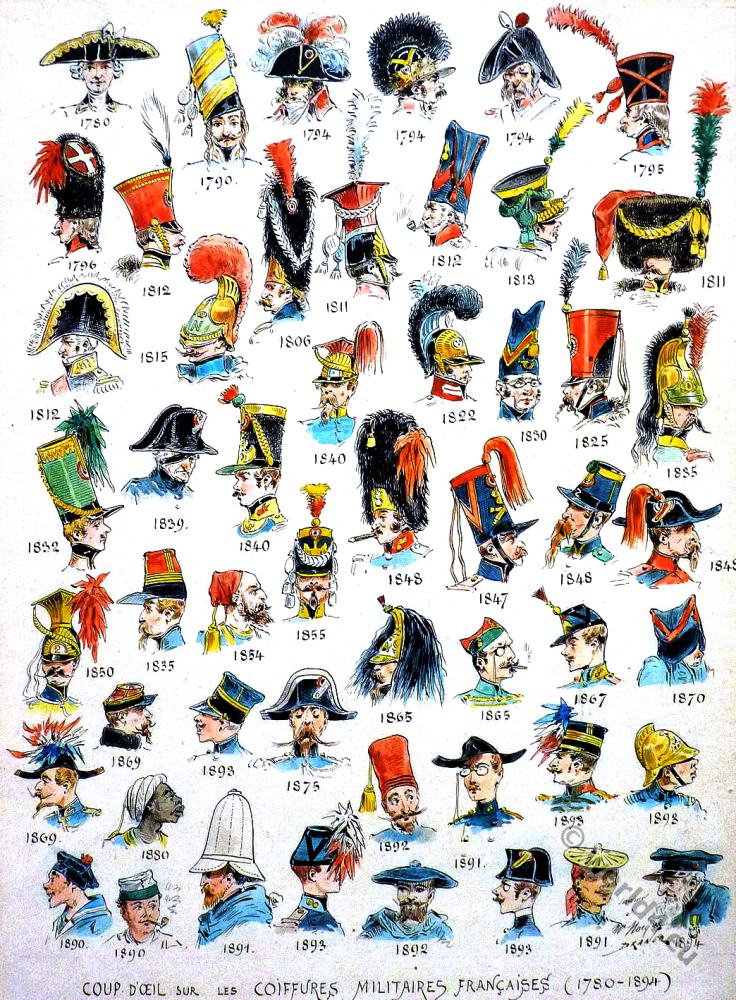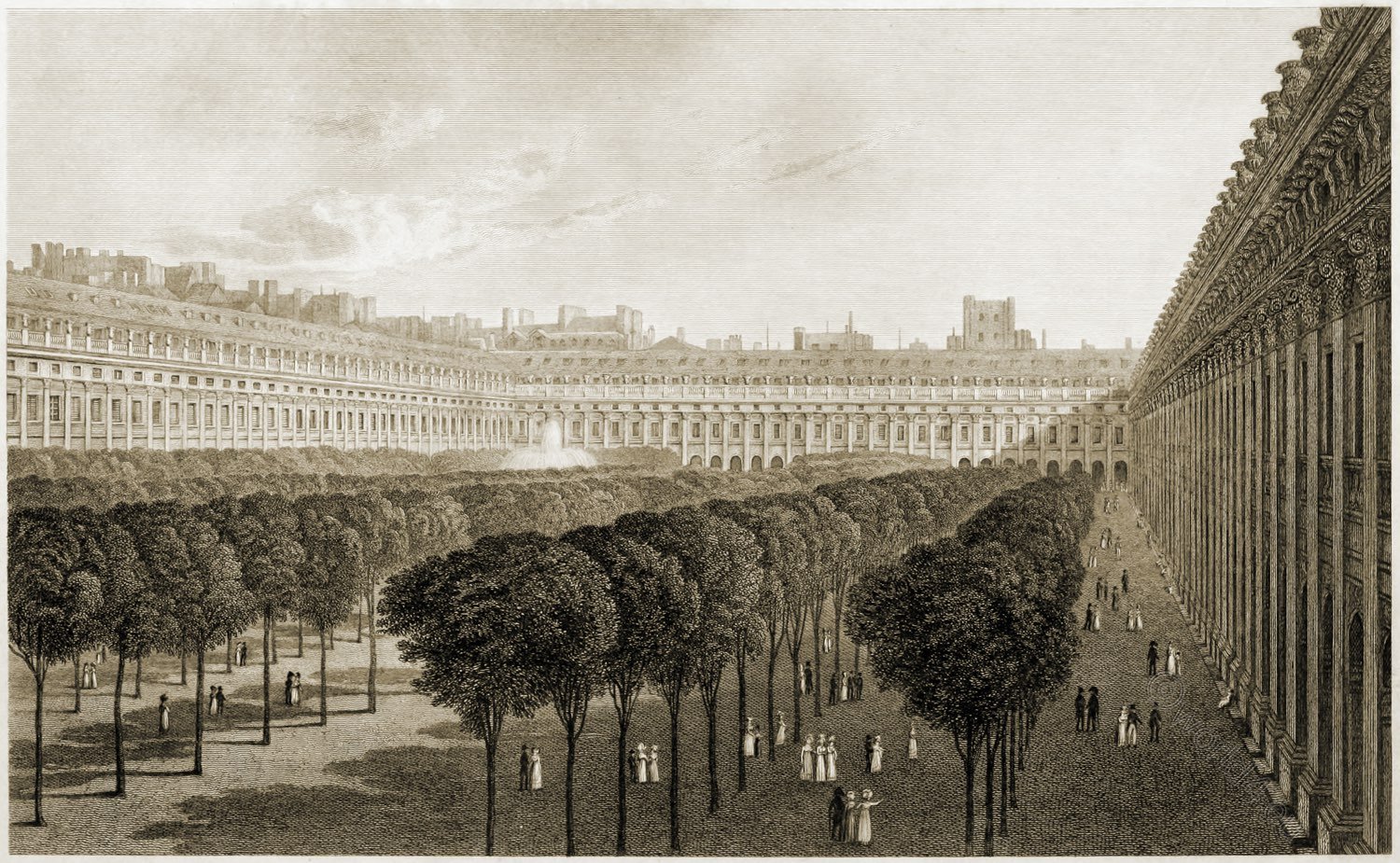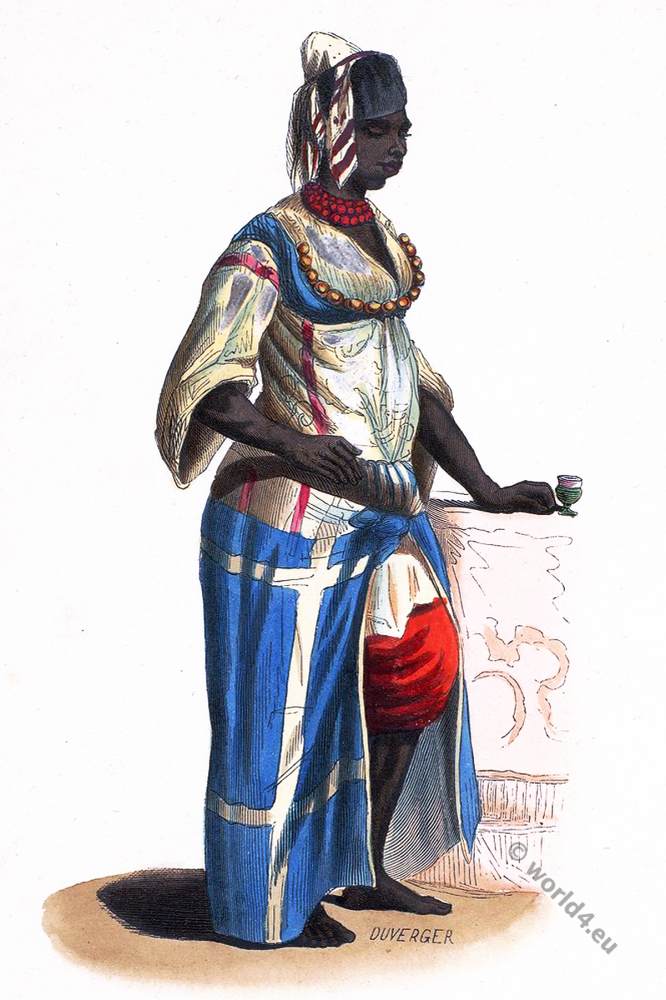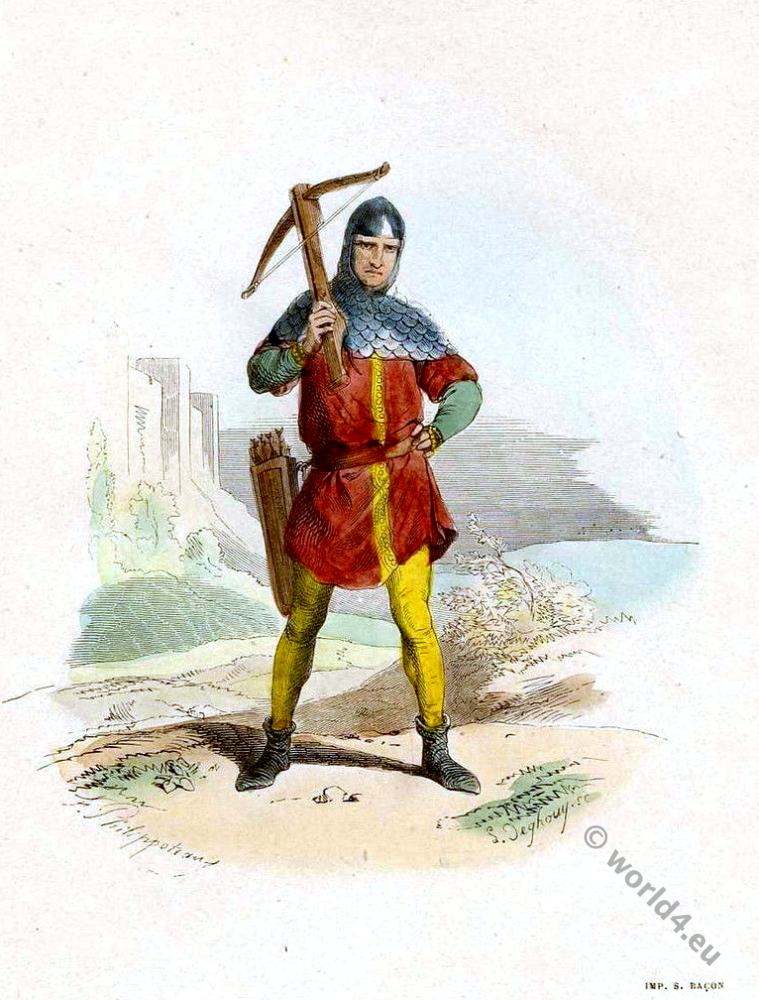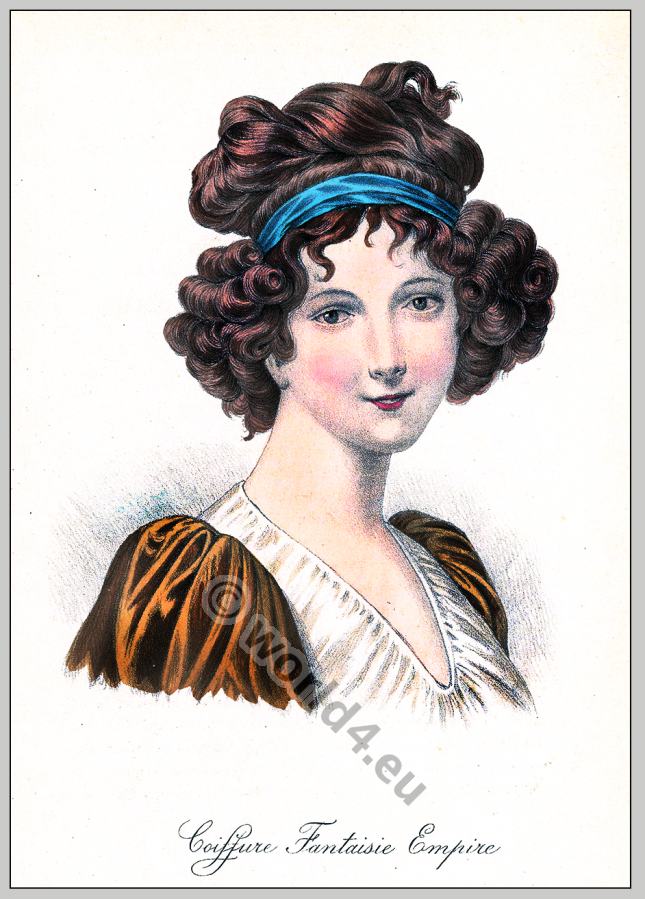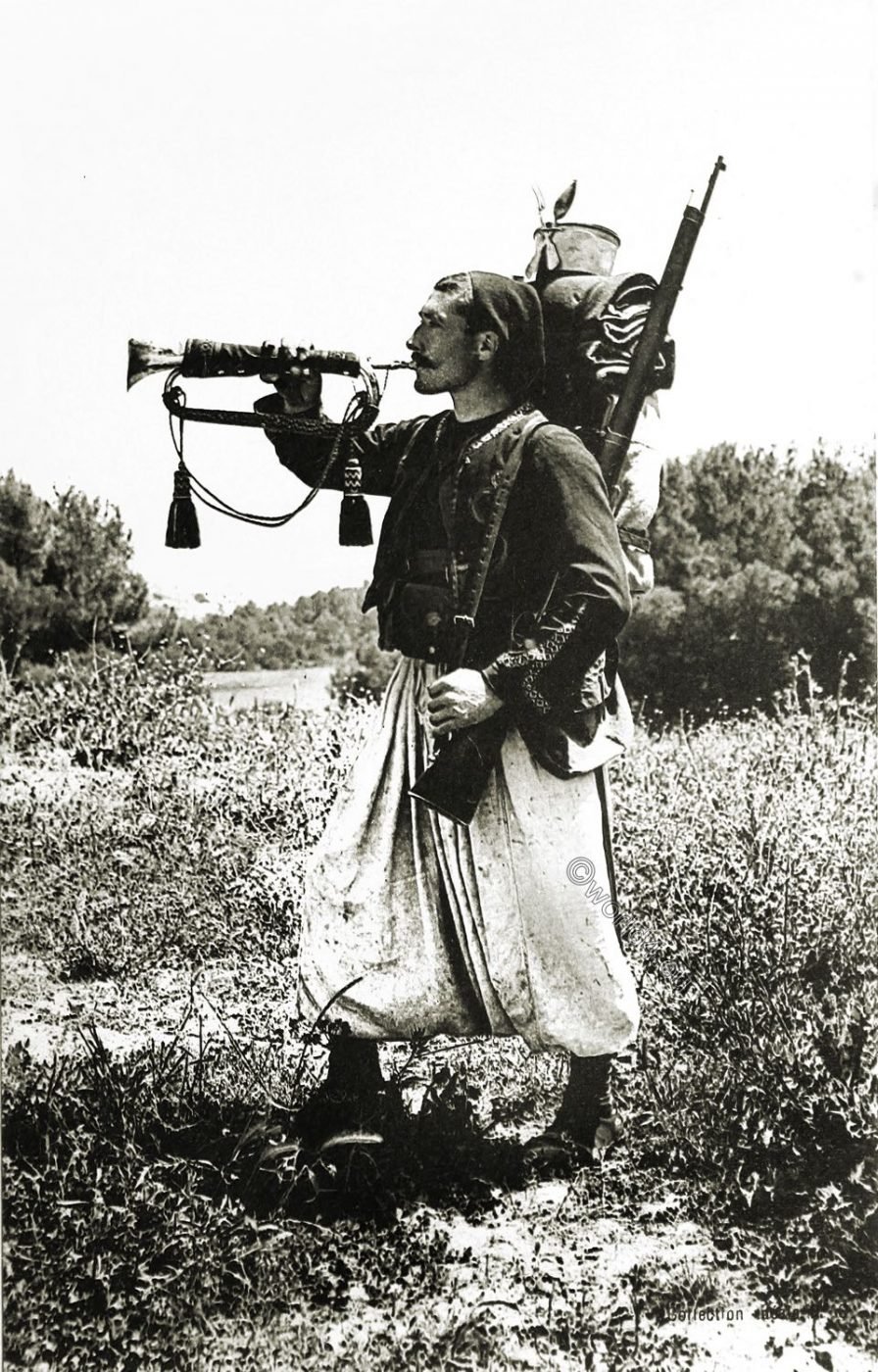
Zouave soldier. Algeria, ca. 1900.
The members of historical infantry units called themselves Zuaven. The name goes back to the Kabyl tribe of the Zuauas in the Zuaua district (Zuavia) in the Algerian province of Constantine, who already provided mercenary troops at the time of the Ottoman Empire who were famous for their bravery.
The motto of the French Zouaves is: Être zouave est un honneur. Le rester est un devoir (Being a Zouave is an honour. To continue to be so (in the moral sense) is a duty.
At the beginning of the conquest of Algeria, on 1st October 1830, France set up a Corps des Zouaves under the command of General Bertrand Clausel. The term Zuave was soon used generally for mercenaries recruited in North Africa. The Zuavas wore eye-catching uniforms based on Turkish oriental costumes.
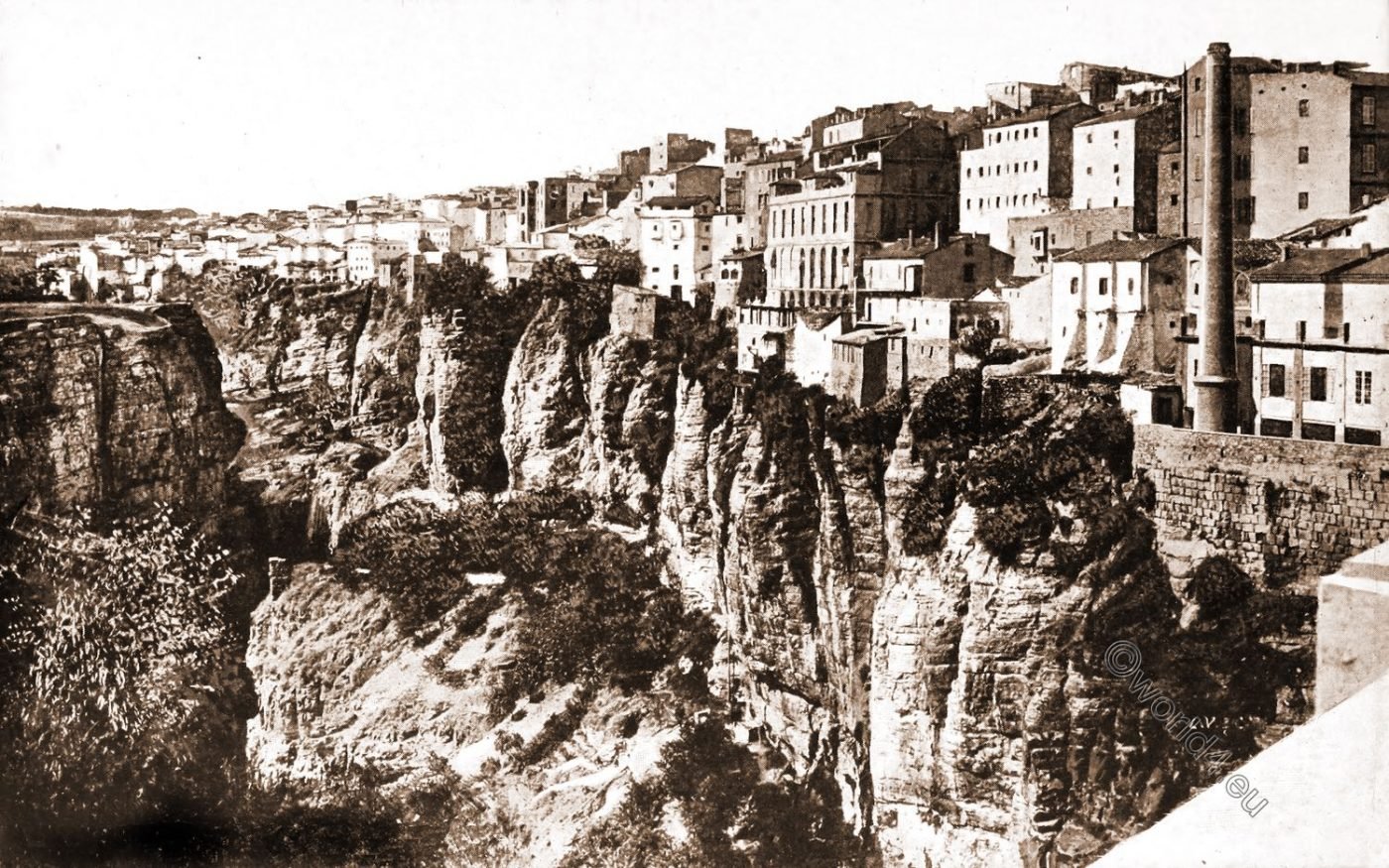
The zouaves’ uniform consisted of a headgear, a short, button-less jacket, a large three-meter-long canvas belt wrapped around the waist, puffy trousers, white gaiters and leggings. The zouaves wore a fez or shashia as their headgear, with a coloured tassel (usually yellow, red, blue or green) and a turban.
The belt was the most difficult accessory to wear. Nevertheless, the Zuava uniform was particularly suitable for the warm and harsh climates of the Algerian mountains. The trousers were puffed, and allowed better air circulation than normal trousers, the short jacket was cooler than the long wool shirts of most armies of the time. One of the reasons for the small number of zuave units was also the additional cost of this particular uniform, higher than that of the uniforms of the other units, simple cut and produced in large series. The typical shape of the puffy trousers of the Zuavi regiments has entered popular jargon, naming a particular model of trousers as “pantaloni alla zuava”.
During the Crimean War, Zuaven regiments distinguished themselves at the battles of Alma, Inkerman and Malakoff, among others, and established the legendary reputation of these units. Since the middle of the 19th century, the Zuavas have developed into a regular infantry force of the French army with an elite character.
The Zuaven regiments included a large part of the conscripted European inhabitants of French North Africa, but also Frenchmen from the motherland. As a result of Algerian independence, the last Zuaven units were disbanded in 1963.
Source:
- Mœurs, usages et costumes de tous les peuples du monde, d’après des documents and authentiques et les voyages des plus récents; Publié par Auguste Wahlen. Chevalier de Plusieurs Orders. Europe. Bruxelles, a la Librairie Historique-Artistique, Rue de Schaerbeek, 12. 1844.
- The Garden of Allah by Robert Hichens. Tauchnitz Edition. Leipzig Bernhard Tauchnitz, 1904.

